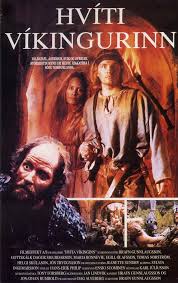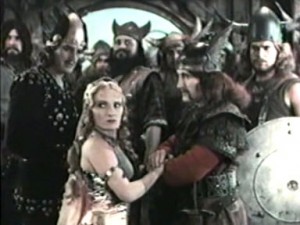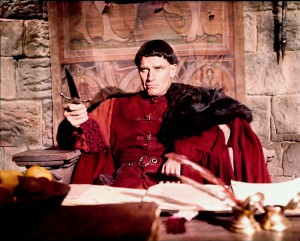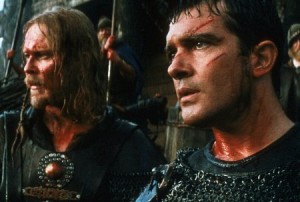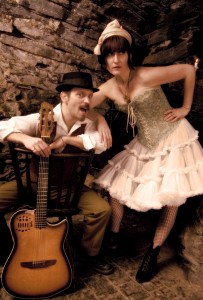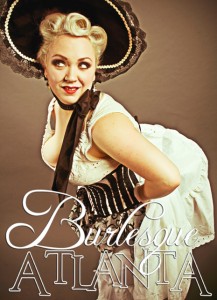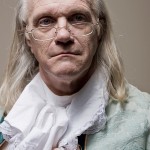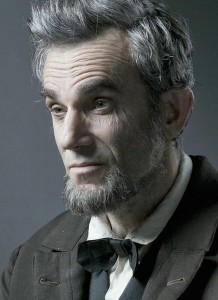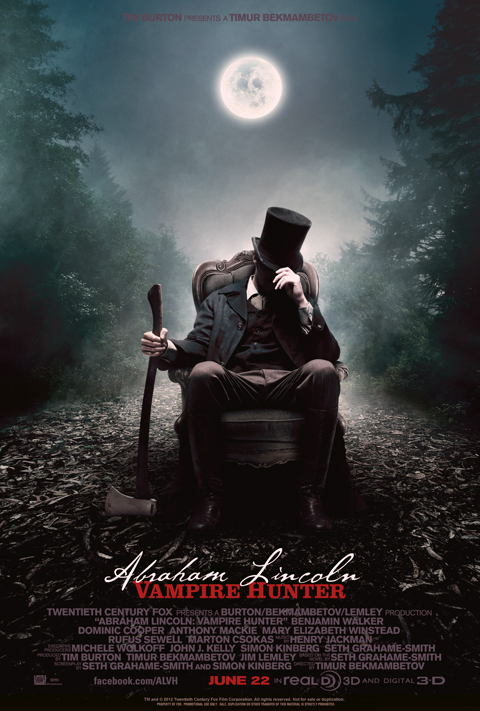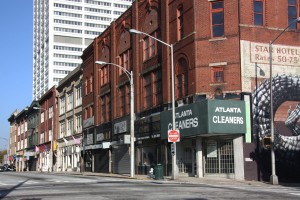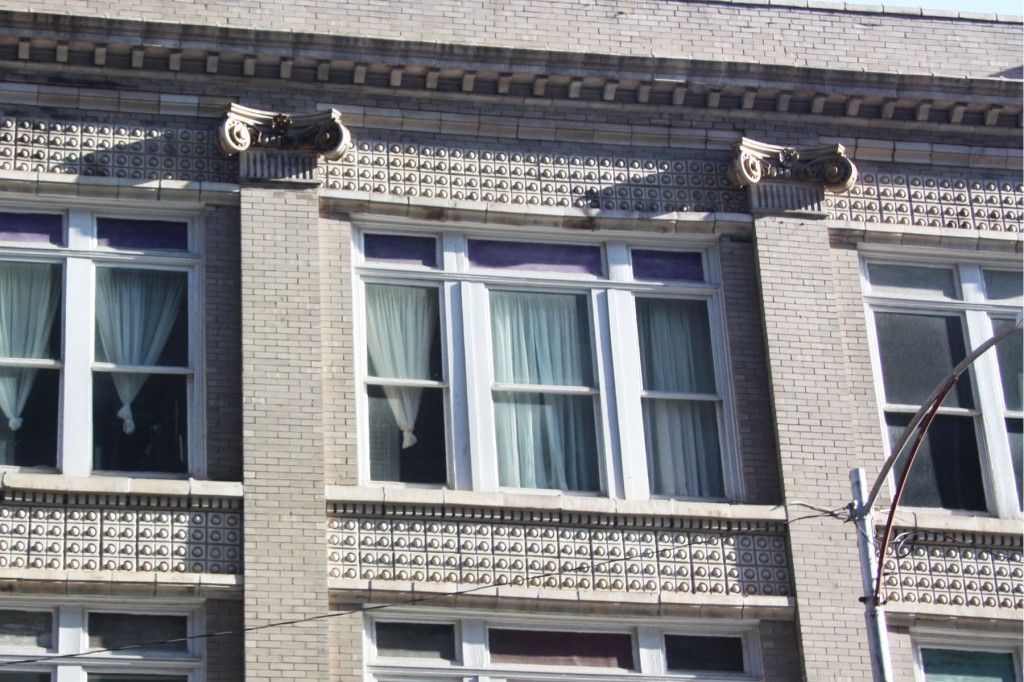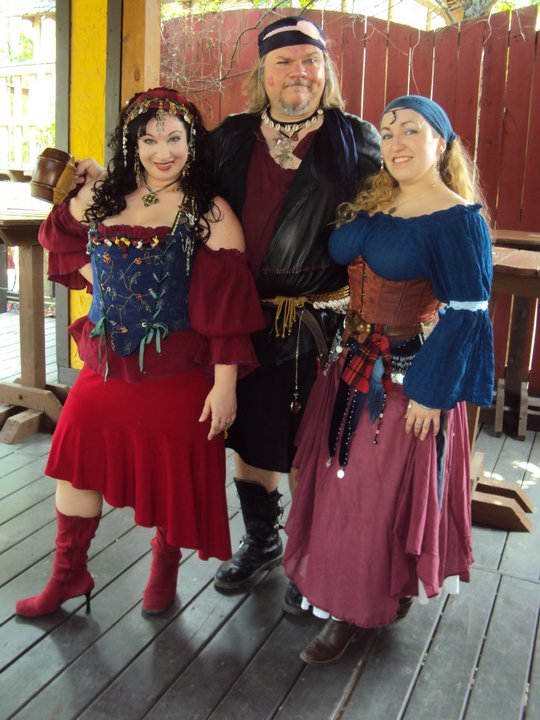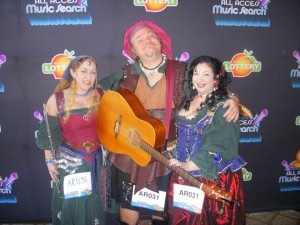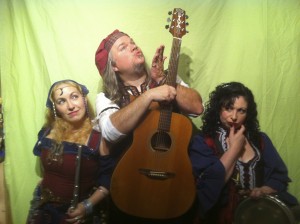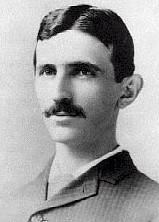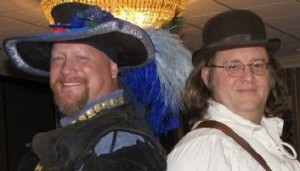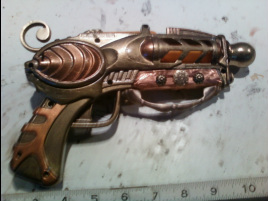By Geoff Slade
Contributing Writer
Capitol City Opera Company’s production of MAN OF LA MANCHA runs this Friday March 24 and Saturday March 25 at 8 p.m. and Sunday March 26 at 3 p.m. at Oglethorpe University’s Conant Performing Arts Center. Check here for tickets.
MAN OF LA MANCHA is a musical based on Cervantes’ DON QUIXOTE, and even those unfamiliar with the Tony Award-winning production, the Oscar-nominated 1972 movie starring Peter O’Toole and Sophia Loren, or the 17th century novel are likely aware of the characters, the imagery and its lead song, “The Impossible Dream,” here rendered by Elvis Presley. It tells a timeless tale of friendship, love and courage in the face of insurmountable odds. I’m guessing. I’ve never seen it. But I’ll get a chance to fix that this weekend!
Music Director Catherine Giel took a break from her busy schedule recently to discuss the show with ATLRetro.
 ATLRetro: Thank you for taking a few minutes before the show this weekend. Is everyone excited?
ATLRetro: Thank you for taking a few minutes before the show this weekend. Is everyone excited?
Catherine Giel: I can’t express enough how excited this cast and crew are. This team has had a really special synergy and everyone is so thrilled to bring a great production to the stage. This is one of the most artistically challenging things we’ve tackled and I think it’s come out beautifully.
What is the Capitol City Opera Company? How long have you been with them?
Capitol City Opera is a company dedicated to nurturing and developing the careers of young professional singers. We are helping them prepare for the great stages of the world by giving them the opportunity to learn roles and perform at a professional level. There is so much talent right here in our city! We also have an outstanding educational component, Capitol City Opera Outreach for Children, that brings one-hour long “children’s operas” into schools and community spaces. We are trying to grow a young audience for opera in addition to developing young performers. I joined the company in the spring of 2010—it’s hard to believe it’s already been seven years. But that’s just a drop in the bucket of the 34 years this company has been in existence.
What are some of the highlights of your tenure there?
There have been many moments I’ve been proud of, both artistically and personally. A few years ago we did a world premiere of Curtis Bryant’s THE SECRET AGENT. That was probably one of the most challenging and rewarding experiences I’ve had with this company. Bringing a new work to life is liberating because there is no precedent, but also terrifying because there is no precedent! We worked directly with the composer throughout and I think the product was really something special. The whole production is up on our YouTube page for anyone that wants to check it out. On a personal level, I’ve experienced a lot of moments of pride when I see a singer grow in a role from the beginning of the process to the end, when I see them have a breakthrough with their technique or understanding of the character. That’s the real reason I do this—to see those lightbulb moments when performers make huge strides in their development and to give them a vehicle to do something they can really be proud of.
What exactly does the Music Director do for a production like Man of La Mancha?
The quick and dirty summary is that I help prepare the singers for the show. This process has many layers. It’s encouraging their technique that will both serve the character as well as help them sing their best. And speaking of character, that’s something that takes quite a bit of study outside of the musical score. We have a lot of discussions about a character’s motivation for singing or saying certain things, and this often informs their delivery of the vocal line. Preparing the music for an opera is full of nuances of color, tone, timing, and expression. At the end of the day, it’s all subjective and we have to hope the audiences enjoy what we’ve created. I also work with our conductor (who happens to be my husband) in preparing the orchestra, which takes separate rehearsals and a lot of planning outside of our work with the singers. Because we use smaller chamber orchestras for our productions, I’m usually behind the piano for the performances, where most people in my position hand the reigns to the conductor and get to sit in the audience to watch. I’ve only gotten to watch from the audience once, when we needed no piano accompaniment, and I was a nervous wreck the whole time so maybe it’s better this way.

Jonathan Sphuler (Cervantes/Don Quixote) tries on his make-up backstage at Capitol City Opera’s Man of La Mancha. Credit: Michael Nutter.
How would you describe the show and specifically the music? Is there orchestral accompaniment?
MAN OF LA MANCHA is allowing us to dip our toes into music theater. It’s definitely not an opera but still requires some excellent technical and artistic singing. It also has the additional challenges of dialogue like you would see in a regular play, which opera singers don’t often get to experience. The music has a distinctly Spanish flair, with prominent guitar solos and flamenco-like rhythms. At times it’s playful and upbeat and at other times, beautifully poignant and even heartbreaking. There is a lot of variety in this score and several melodies get stuck in your head for days. We are using a seven piece orchestra to accompany this production, who will be visible on stage and a part of the action with the rest of the cast, as opposed to stuck down in a pit where you never get to see them.
It was performed originally over 50 years ago and has been revived many times on Broadway since. How familiar were you with any of the past stage productions? How about the 1972 Peter O’Toole / Sophia Loren film?
I think it’s a testament to what a great show MAN OF LA MANCHA is that it’s been done so many times and even made into a movie. In fact, the 1972 film is quite true to the original score and dialogue and was a nice reference to have as we were preparing our version. There are also several wonderful Broadway recordings out there, each with their own unique spin on the show. I hope that we will also bring our own individual flavor and some novelty to the table, especially since I imagine many of our audience members will be familiar with the music.
What does your version offer fans of the musical and fans of musical theater in general?
We have stayed true to the original score and the book (that’s the part with the spoken dialogue). For instance, Aldonza’s number “What Does He Want With Me” often gets cut, but it’s so beautiful and Rachel Eve sings it so well, it would have been criminal to eliminate it. We also do this production with 21 cast members, which is the bare minimum, meaning that everyone has an important part to play. In a traditional opera, you may have a handful of principal cast members and everyone else is in the ensemble, but in this show everyone is essential and you become really familiar with them throughout the performance. Also, the Conant Performing Arts Center at Oglethorpe University is a fairly intimate venue, allowing you to feel like you are part of the action. And I don’t want to give away too much, but the way we plan to immerse the audience into this show right from the beginning is going to be really special.
Do you have a favorite song or scene? Is there one in particular you expect audiences to really love?
I think everyone loves “To Dream the Impossible Dream.” It’s a powerful song in or out of context of the show. The lyrics really encompass the longing that we all have as humans to strive to be our best, to fight the good fight, and triumph over wrongs. I think there is also a very charming scene between Sancho, Don Quixote’s squire, and Aldonza in which Sancho is trying to get her to give him a “token” to give to his knight and also attempting to read her a passionate missive written by Don Quixote, only….neither of them can read. Another particularly excellent scene is the fight between Don Quixote and a band of rough muleteers. I’ll just say that a giant spinning ladder and some acrobatics are involved.
I understand you are also a professional pianist and vocal coach. Do you perform regularly? Do you specialize in a particular singing style?
I am and I do! I perform mostly as an accompanist for singers and instrumentalists in concert, I rarely do solo recitals anymore. That’s not on purpose, I just haven’t had the time or opportunity and I truly enjoy collaborating with other artists more than playing alone. And I regularly coach opera singers as they prepare for roles, auditions, and competitions not just in Atlanta, but around the country. I would say I specialize in opera and art song, but I’ve been known to do the occasional bit of jazz and pop music. Just don’t ask me to teach you “Let It Go.”
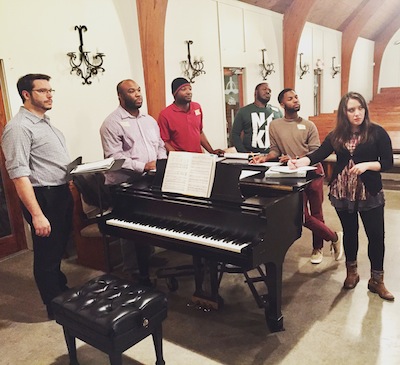
Michael Lindsay, Albert Clark, Sean Savage, Damien Rasheed, Xavier Durden, and Rachel Eve Holmes receive musical instruction at a rehearsal for Man of La Mancha. Photo credit: Catherine Giel.
What’s next for you and Capital City Opera?
We’ve always got something coming up! We do a monthly series called Dinner and a Diva at Petite Violette restaurant. Each month we feature highlights from a different opera with our best singers and a narrator to guide the audience through the story. This takes place over an excellent three course meal with wine and happens every third Tuesday of the month. We also have a really fun event called Win, Dine, and Win coming up on April 7. This is an evening of food and games, including an aria auction that has gotten pretty competitive! This summer is the 25th anniversary of On The Light Side and this is our biggest fundraiser of the year. It’s an indoor BYOP (bring your own picnic) and we have a cast of singers that perform a cabaret-style show of music theater hits. This year’s theme is “The Golden Age of Broadway.” This is a hugely popular event and usually sells out. It’s the last Friday and Saturday nights in July. And of course we are preparing for the next mainstage show….details to come on that soon! Information on all these events and more can be found on our website at www.ccityopera.org
Thanks again for your time. Anything else you’d like to mention?
Only that we appreciate the support from our audiences so, so much. We are a local company, staffed with local talent, local set painters, designers, costume makers, sound engineers, etc. etc. We think of ourselves like a family and we truly dedicate everything we have to creating a great product. We hope you will come to one of our events and see what we are all about and learn about how we are working in the Atlanta community to spread some great art and love for opera. It’s what we are truly passionate about. Also, we are super hip with the social media, so you can find us on Facebook, Twitter, and Instagram!










